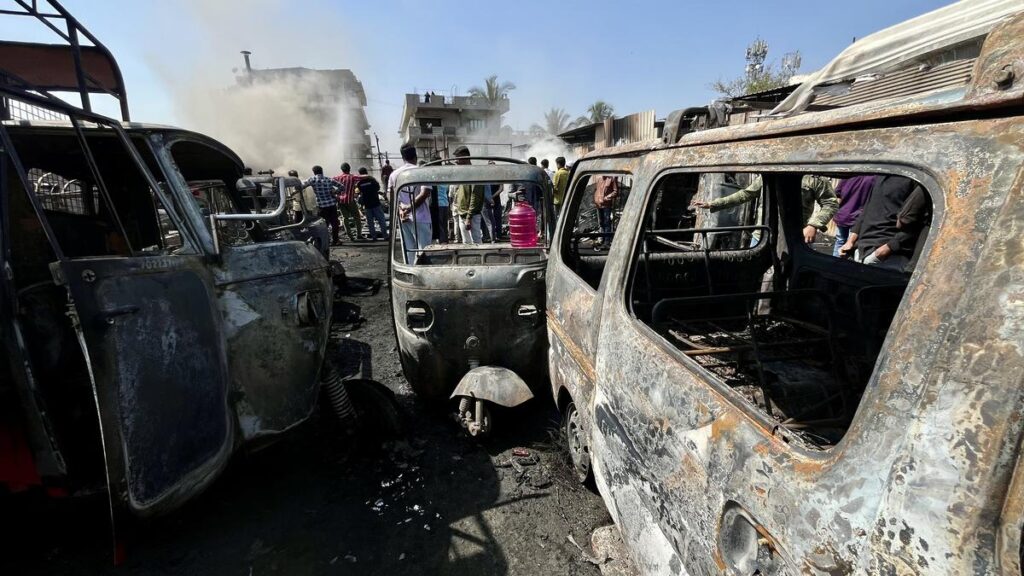On the early morning of 23rd February 2024, a fire broke out at a plastic waste shredder unit in Gangondanahalli, near Nayandahalli in Bengaluru. This incident resulted in the destruction of at least 26 autorickshaws and one car, though, fortunately, no injuries were reported. This case study analyses the incident, its causes, response efforts, and lessons learned to improve future safety measures.
Background
The plastic waste shredder unit, owned by Rizwan, also served as a parking lot for autorickshaws, goods vehicles, and pushcarts. The vehicles were parked at the rate of ₹30 per night. The unit had a shed where plastic waste was stored and shredded, and the presence of these materials significantly contributed to the fire’s intensity.
Incident Timeline
- 1:45 a.m.: Mahesh, a local resident, noticed the fire starting in the shed and spreading rapidly through the compound.
- 1:57 a.m.: The Fire Department was alerted via a call.
- 2:00 a.m.: Five fire tenders were dispatched to the scene.
- 8:00 a.m.: The fire was brought under control.
Response Efforts
The rapid response of the Fire and Emergency Services was crucial in preventing injuries and further damage. Local residents, including auto drivers like Mohammed Aslam and Mahesh, played a significant role in moving vehicles away from the fire, potentially saving many from being destroyed.
Analysis
Cause of Fire
The fire is suspected to have originated from an electric short circuit in the shed where plastic waste was stored. The plastic waste and additional flammable materials in the vehicles exacerbated the fire, making it difficult to control.
Challenges
- Combustible Materials: The presence of plastic waste and flammable items within vehicles fuelled the fire.
- Parking Density: The concentration of vehicles in the area made it challenging to move them quickly and safely.
- Emergency Response: Despite the prompt arrival of fire tenders, the sheer volume of combustible materials made firefighting efforts more difficult.
Impact
- Property Damage: 26 autorickshaws and one car were completely gutted.
- Economic Loss: Auto drivers who lost their vehicles are now facing severe financial distress, with many of them relying on rented vehicles to earn a living.
- Community Reaction: Residents and the Autorickshaw Drivers’ Union have called for compensation and better safety measures.
Lessons Learned
- Fire Safety Measures: There is a critical need for comprehensive fire safety protocols in areas with high-density vehicle parking and storage of combustible materials.
- Preventive Equipment: Installation of fire extinguishers and other fire suppression systems in such premises can significantly mitigate risks.
- Electrical Safety: Regular inspections and maintenance of electrical systems can prevent short circuits and potential fires.
- Awareness and Training: Educating the community and workers about fire safety practices and emergency response can help in minimizing the impact of such incidents.
- Government and Community Support: Post-incident support, including financial compensation and aid in accessing insurance claims, is vital for the affected individuals to recover and rebuild.
Recommendations
- Enhanced Safety Regulations: Implement strict safety standards for units dealing with combustible materials and for parking lots.
- Regular Inspections: Conduct periodic fire safety inspections to identify and rectify potential hazards.
- Fire Safety Infrastructure: Invest in fire detection and suppression systems to quickly address any outbreak.
- Community Training Programs: Organize fire safety drills and training sessions for residents and workers.
- Support Systems: Establish mechanisms for swift government support and compensation for victims of such incidents.
Conclusion
The Gangondanahalli parking lot fire underscores the importance of robust fire safety measures and community preparedness. By learning from this incident and implementing the recommended actions, we can enhance safety and resilience against future emergencies. The combined efforts of government authorities, local communities, and business owners are essential to prevent such tragedies and protect lives and property.
By addressing these critical areas, HowToSurvive.in aims to educate and empower individuals and communities, fostering a culture of safety and preparedness.




